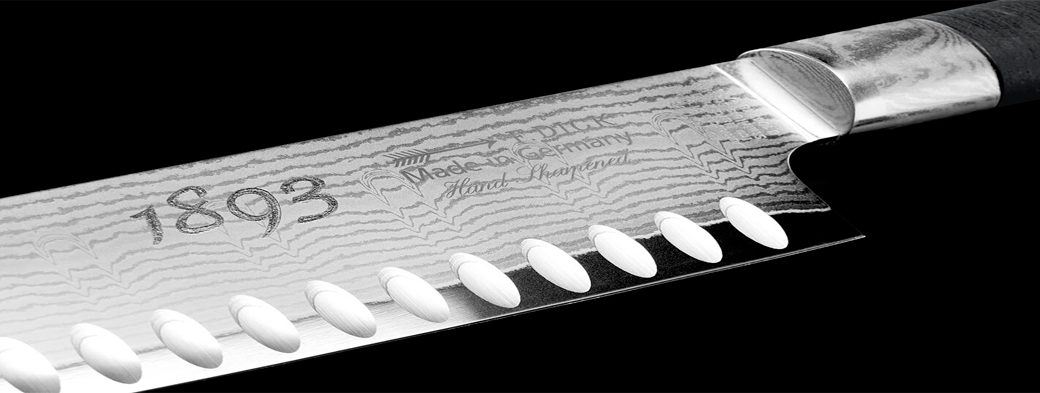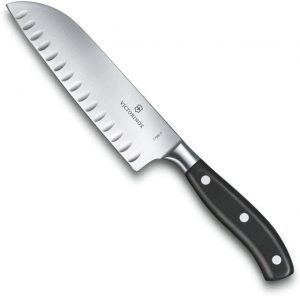If you’re familiar with kitchen knives, you may have heard the term Granton Edge and also Kullenschliff Edge being considered to describe the exact same point. While appearing identical on the surface, there are mild distinctions between both.
Granton Edge
Kitchen knives called having a Granton Edge only describe knives manufactured by the Granton business.
This blade style was patented in 1928 by Wm.Grant & Sons Ltd. They were manufactured by Granton Knifemakers in Sheffield with roots going all the way back to 1601.
With semi-circular scallops ground right into the side on both sides of the blade, from pointer to the middle of the blade. These blades are distinguishable from scalloped blades from other companies as the scallops on Granton Edges expands right to the reducing side.
The scallops create air pockets in between the knife as well as the food being cut, avoiding anything from sticking to the blade.
Because of this, Granton Edges are normally made use of as slicers or carvers due to this feature. Lately, nevertheless, it is an usual feature on all-purpose sorts of blades such as the Western variants of the Santoku knife.
Kullenschliff Edge
Scalloped blades made by other manufacturers are called Kullenschliff blades (definition ‘cut’ or ‘work’ in German) and have oval scallops hollowed out on one or both sides of the blade over the edge.
It is a popular attribute on lots of German carving and also slicing blades, as well as the Western variants of the Santoku knife as mentioned above.
Am I able to sharpen Granton Edge or Kullenschliff Blades
Yes. Granton Edge or Kullenschliff blades do not have serrated or wavy edges such as bread knives. The edge is even and also straight making honing straightforward as well as simple.
Advantages
- Cuts as well as pieces through meats, veggies and cheeses like a charm minimizing any food getting stayed with the blade, conserving you time and the aggravation of having to remove sticking bits of food after each piece.
- The slightly thicker as well as much heavier blade offers you even more power and also weight into each cut which might be helpful for some.
Disadvantages
- Slightly higher price contrasted to non-scalloped blade blades (although the price difference isn’t as well substantial).
- Indentations require a particular density, more frequently used on thicker and softer blades making them heavier.
- The thicker blade might cause it to get wedged when attempting to cut through something challenging like a pumpkin; when you’re halfway through the cut, both sides of the pumpkin will be pressing at both sides of the blade and it might get stuck.
- The thick blade might screw up a delicate task, such as crunchy or flaky dessert as the knife might squash instead of finely cut via.
Conclusion
Granton Edge only refer to scalloped blades by the Granton business, whereas Kullenscliff blades are any type of scalloped developed blades by any other firm.
The main distinction is Granton Edge have hallowed out blades all the way to the side, whereas Kullenscliff blades are hallowed out over the edge.
They are developed to create air pockets to quit food from sticking to the blade when cutting or sculpting. However, in order to be able to burrow a few of the blade, it calls for a somewhat thicker blade.
You have a wide variety for different uses of Granton Edge at your choice, we suggest and recommend some of them here.
what´s your opinion?
Do you choose Granton Edge, Kullenschliff or non-scalloped blades? Let us know in the comments below!

